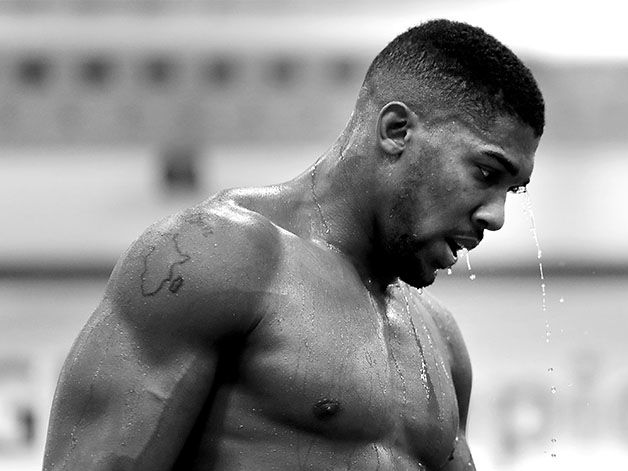Since prospective G.O.A.T sportsmen such as Conor McGregor, Cristiano Ronaldo, and LeBron James expressed their belief in the power of yoga to rejuvenate the mind and body, men of all shapes and sizes appear to have converted to the practice.
It’s difficult to go through a gym without seeing someone spread out in a downward-facing dog position, and the activity’s growing popularity means that we all now have to live in a world where ‘Broga’ — yoga for dudes — exists.
However, Anthony Joshua, the reigning IBF, WBA, WBO, and IBO Heavyweight Champion of the World, will not be in crow pose anytime soon.

Joshua’s aversion to yoga isn’t anything to do with the actual practise. Joshua’s problem with yoga is, firstly, that his personality demands he give 100 per cent to any activity he throws his considerable weight behind, and he feels he’s a little busy at the minute to work on his vinyasa.

The champ also believes the yoga that many people practice today is so far removed from the activity’s traditions that he wouldn’t want to practise it until he could learn how to do it properly.
“The true meaning of yoga is about meditation as well as stretching, taking yourself away from the natural, from the reality of your life and going to a different place,” says Joshua, speaking exclusively to Men’s Health UK.
“Because I know that, I would rather just stretch because yoga has deep meaning and there’s a religion base behind it, so I don’t want to abuse yoga for what it’s not. I’d rather do it properly and that takes a lot of time.”

A brief history of yoga
Joshua’s right in saying that the yoga many people practice today is very different from the activity’s origins.
Yoga is one of India’s most significant cultural exports, which aims to harmonise people’s physical, mental, emotional, social and spiritual states. The activity was first practised only by religious ascetics, and clear references to it can be found in texts from 2,500 years ago
Speaking to the BBC, Dr Mark Singleton, a senior researcher in the modern history of yoga at SOAS, said that over time practices have evolved and the activity has taken on a more physical role. “European notions of gymnastics and bodybuilding got mixed up with Indian postures and poses along the way, and what many of us know today as yoga is partially a result of this mixing,” said Singleton.

Joshua’s alternative to yoga
For Joshua, it’s not a choice between a watered-down version of yoga or being as stiff as a board. There is an alternative.
The Heavyweight Champion advises readers to “incorporate a stretch routine or a flexibility and muscle recovery routine because it helps stimulate the mind and recover the body.”
“I think in the morning, if they can, or at night before they go to bed…try and get a foam roller and just roll out the muscle, or just have a little stretch. You’ll sleep so much better, and that way you can attack the day,” says Joshua.





